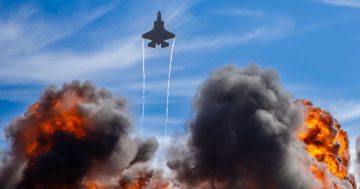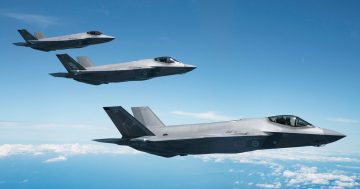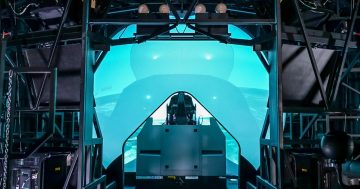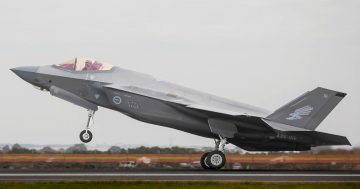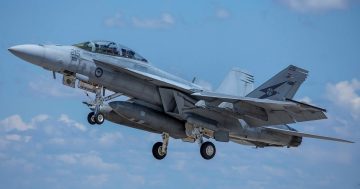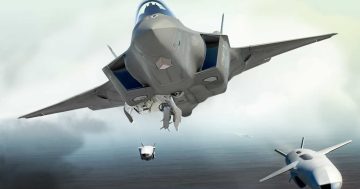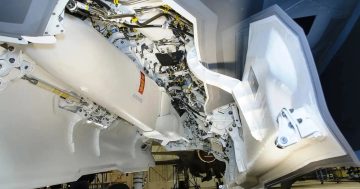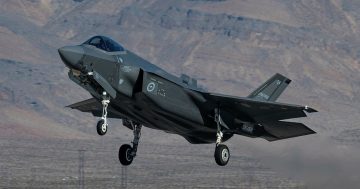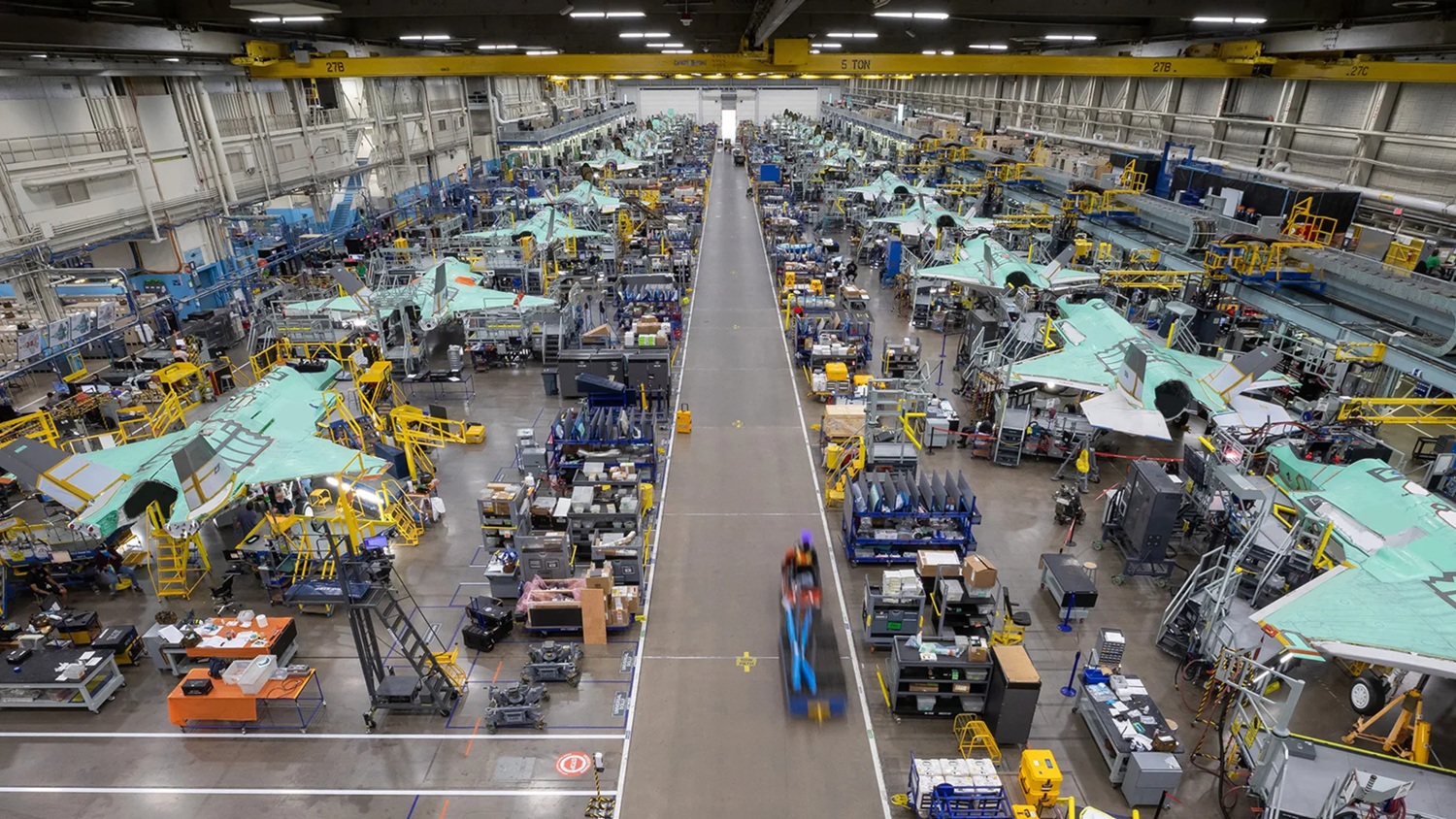
The Joint Strike Fighter program was jointly funded by partner nations. Photo: Lockheed Martin.
Australia’s defence industry recently celebrated a major milestone, surpassing $5 billion in value for the manufacture of components or the supply of sustainment services for the multinational F-35 combat aircraft program.
The Joint Strike Fighter program has in many ways been seen as a model for future programs to jointly develop advanced weapons systems.
Conceived in the mid-1990s to replace multiple combat aircraft types operated by the US, UK and allied nations, the program resulted in the Lockheed Martin F-35 Lightning II.
Built in three variants – the F-35A conventional takeoff and landing (CTOL) model, the F-35B short take-off and vertical landing (STOVL) variant, and the F-35C aircraft carrier variant (CV) – the program was jointly funded by nine partner nations including the US, UK, Canada, Denmark, Netherlands, Norway, Italy, Turkey, and Australia.
Turkey has since been suspended from the program after it bought an advanced air defence system from Russia which has the potential to compromise the F-35’s low observability – i.e. stealth – and send data back to Russia.
Part of the partner arrangement saw each of these nations receive industry workshares on the program roughly aligned with how many aircraft they would eventually order, and what percentage of the total build run that number comprised.
The program originally envisaged more than 3000 F-35s of all models would be built for the nine partner nations. The US, of course, would be the largest operator with a requirement for more than 2400 aircraft for all three of its services, while the Royal Australian Air Force originally expressed a requirement for 100 F-35As to replace its 24 F-111C strike aircraft and 71 F/A-18A ‘classic’ Hornet fighters.
So, with a requirement for roughly three per cent of the projected fleet required by all partners, Australia’s defence industry was invited to tender for a similar percentage of the overall projected manufacturing cost of the program.
Despite multiple developmental delays with the program which saw combat-capable aircraft delivered several years late and at a unit cost nearly double that expected when the project commenced, Australia recently took delivery of the last of the 72 F-35As it currently has on order.
But those delays meant Australia could not keep the F-111s in service long enough to be replaced by the F-35A, so an interim or ‘bridging capability’ or 24 Boeing F/A-18F Super Hornets was acquired in 2008.
The RAAF’s Super Hornets were later augmented with 12 EA-18G Growler electronic attack aircraft, and it is now history that the Super Hornets have exceeded the intended bridging period of a decade and will likely now serve a full 25+ years in RAAF service.
Because of this, Australia’s total F-35A requirement was reduced from 100 to the current 72 aircraft, although rumours persist of moves within the RAAF to push for an additional squadron of aircraft.
More than 75 Australian companies are involved in the manufacturing and sustainment program, including Marand, Rockwell Collins Australia, Holman Metallic, Ferra, BAE Systems Australia, Quickstep, Lovitt, Cablex, Micreo, RUAG Australia, Qinetiq, Chemring Australia, Partech, AW Bell, Levett, Broens, KBR, Thales Australia, Trimcast, TAE, and Goodrich Australia.
Components manufactured or sustainment services provided by these companies are likely to be found on every F-35 of all three models that have been manufactured to date, regardless of who operates the aircraft.

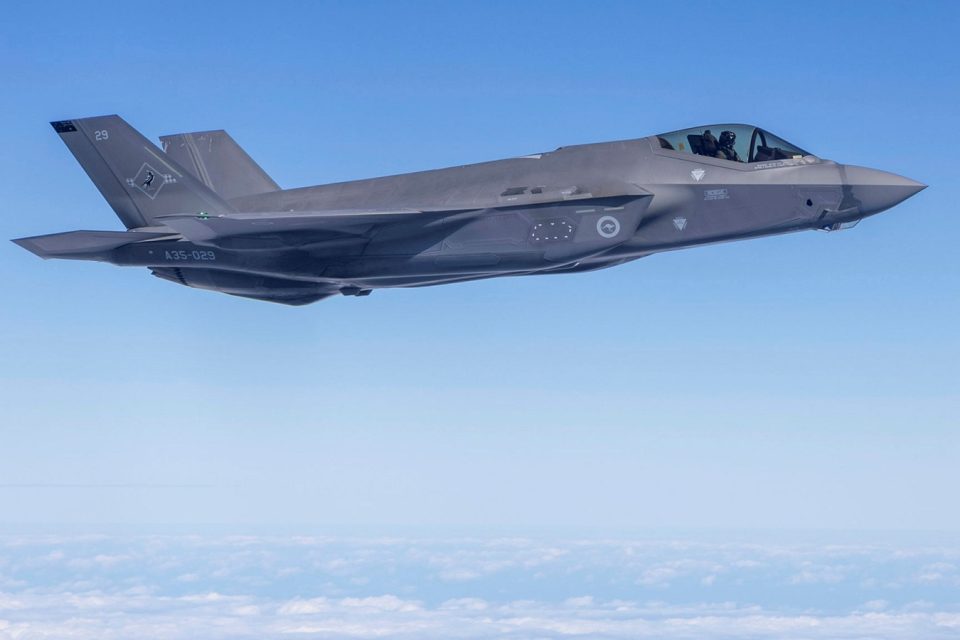
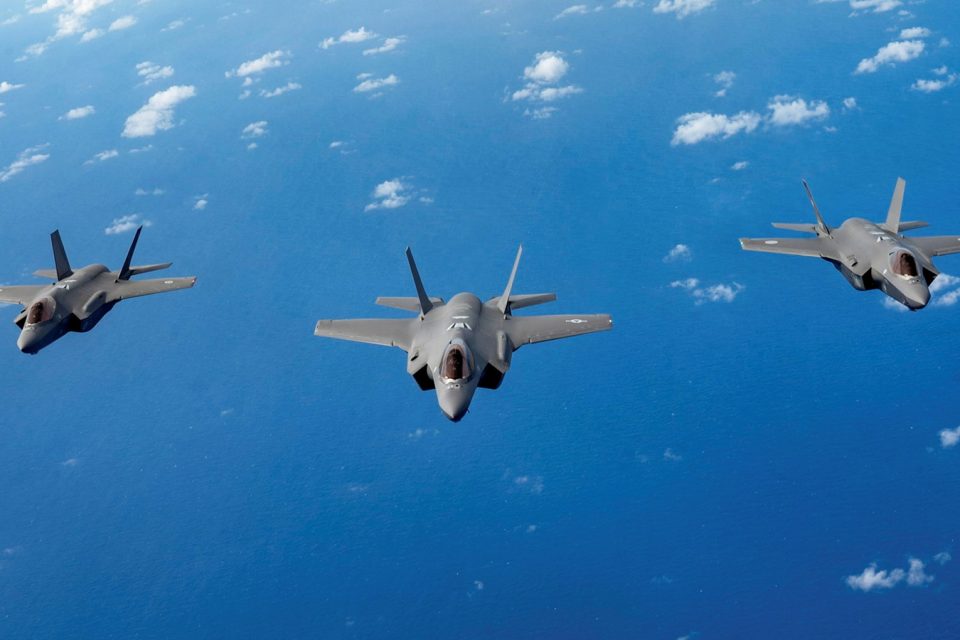
In a statement recognising the milestone, Defence said, “The contracts secured by Australian businesses cover a wide range of critical capabilities, including the supply of components for the F-35 sophisticated avionics and propulsion systems, as well as providing ongoing maintenance and upgrades.
“These contributions have been instrumental in the development of cutting-edge technologies and the establishment of a highly skilled workforce, further strengthening Australia’s defence capabilities.”
As at the end of January, more than 1100 F-35s of all models had been delivered to partner nations, as well as other customers including Japan, Israel, South Korea, and Belgium, while additional aircraft are on order for Poland, Singapore, Finland, Switzerland, Germany, Czech Republic, Greece, and Romania.
The global fleet will shortly achieve the milestone of a total of one million flight hours over more than 600,000 flights.
But challenges remain, particularly with delays to the development of new hardware and software for key enhancements under the Block 4 upgrade program, and ongoing shortfalls in aircraft availability.


